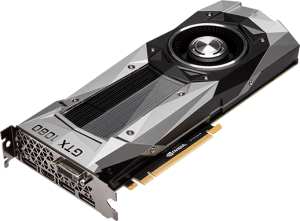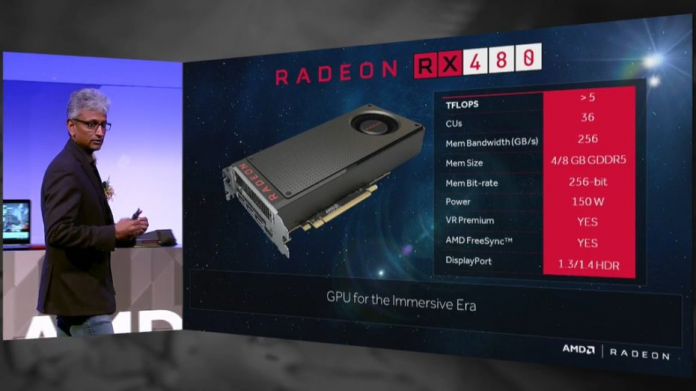Announced today and set for launch on 29th June 2016, AMD’s Radeon RX 480 aims to deliver the world’s most affordable solution for premium PC virtual reality (VR) experiences. However, nothing is ever black-and-white, and while the $199 USD price tag may seem appealing, VRFocus has dived in deep to offer a comparison guide as to whether this new graphics card really does offer the most bang for your buck.
Prior to the announcement of the AMD Radeon RX 480 came the launch of NVIDIA’s ‘new king’, the GeForce GTX 1080, and following hot on the heels of it will be the GeForce GTX 1070. Both of NVIDIA’s new GeForce GTX 1000 series cards are more than capable of delivering premium VR experiences, but at comparatively a high cost. AMD’s Radeon RX 480 is set to be the most affordable graphics card designed for VR, but is it going to be a premium experience?
“As we look to fully connect and immerse humanity through VR, cost remains the daylight between VR being only for the select few, and universal access for everyone,” stated Raja Koduri, senior vice president and chief architect, Radeon Technologies Group, AMD, at the announcement of the Radeon RX 480. “The Radeon RX Series is a disruptive technology that adds rocket fuel to the VR inflection point, turning it into a technology with transformational relevance to consumers.”
In the graphics card arms race numbers can speak louder than words. Below is a chart comparing the currently announced specifications of both AMD and NVIDIA’s current consumer graphics cards, including the AMD Radeon RX 480, R9 380X and R7 260X, and NVIDIA’s GeForce GTX 1080, 1070, 980 Ti, 980 and 970.

| RX 480 | R9 380X | R7 260X | GTX 1080 | GTX 1070 | GTX 980 Ti | GTX 980 | GTX 970 | |
| Technique | 14nm FinFET | 28nm | 28 nm | 16 nm FinFET | 16 nm FinFET | 28 nm | 28 nm | 28 nm |
| GPU | Polaris 10 | Tonga XT | Bonaire XT | GP104 | GP104 | GM200 | GM204 | GM204 |
| Calculating Power | 5,0 TFLOPS | 4,0 TFLOPS | 2,0 TFLOPS | 9,0 TFLOPS | 6,5 TFLOPS | 5,6 TFLOPS | 4,6 TFLOPS | 3,9 TFLOPS |
| Base Frequency | 1 080 MHz | 970 MHz | 1 100 MHz | 1 607 MHz | – | 1 000 MHz | 1 126 MHz | 1 050 MHz |
| Bus | 256-bit | 256-bit | 128-bit | 256-bit | 256-bit | 384-bit | 256-bit | 256-bit |
| Memory | 8 GB GDDR5 | 4 GB GDDR5 | 2 GB GDDR5 | 8 GB GDDR5X | 8 GB GDDR5 | 6 GB GDDR5 | 4 GB GDDR5 | 4 GB GDDR5 |
| TDP | 150 W | 190 W | 115 W | 180 W | 150 W | 250 W | 165 W | 148 W |
| Price (SRP) | $199 USD | $229 USD | $139 USD | $599 USD | $449 USD | $769 USD | $539 USD | $349 USD |
| Release Date | 29th June 2016 | Available Now | Available Now | Available Now | 27th June 2016 | Available Now | Available Now | Available Now |
From the specifications listed above it’s easy to see where each AMD and NVIDIA’s targets lay, with the former aiming for entry level consumer products capable of delivering high quality VR and the latter targeting the core PC demographic. However, the race is far from over, and AMD are expected to announce another graphics card as part of the Radeon RX 400 series in due course. As ever, VRFocus will keep you updated with all the latest details















